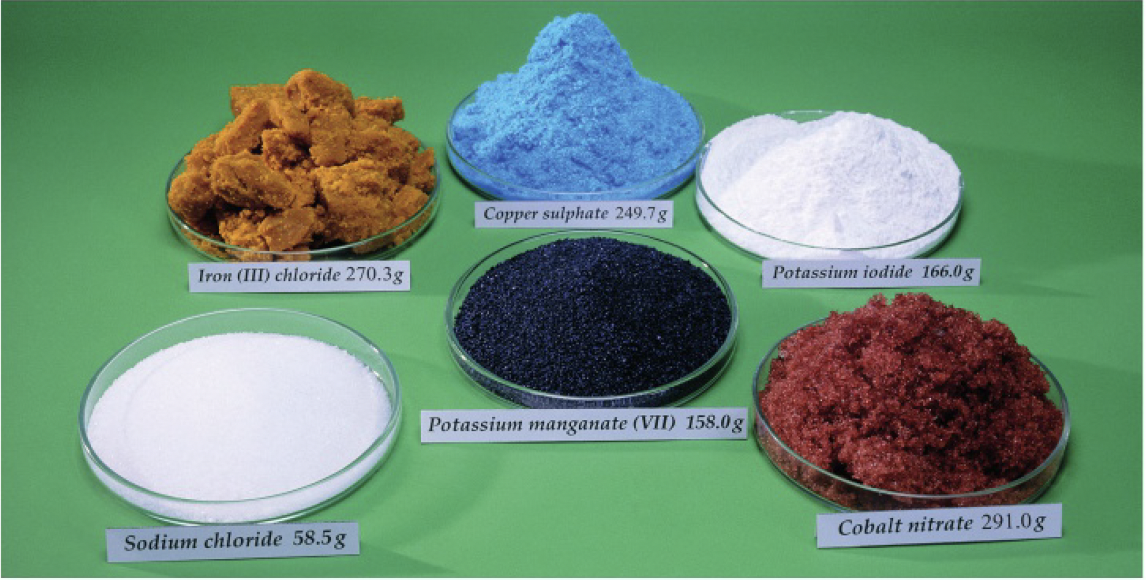chem modelsofparticulatenatureofmatter
Structure 1.4.2 - masses of atoms are compared on a scale relative to
the isotope carbon-12 is used as the reference point for comparing masses of atoms.
the mass of an individual atom in a sample is taken as a weighted average of the mix of isotopes present in the sample.
relative atomic mass
values for
relative formula mass
relative formula mass
challenge questions
- Periodic tables usually, but not always, position hydrogen at the top of group 1. What are the arguments for and against different positions for the placement of hydrogen in the periodic table?
against:
- group 1 elements consist of reactive metals. hydrogen is not a reactive metal
for:
- group 1 elements have 1 valence electron, so does hydrogen
- Three of the compounds as in the photograph above are hydrated, containing water of crystallisation as described on page 101. Use the formulas given in the caption and the masses marked on the photograph to deduce which compounds are hydrated, and the full formula of each.
